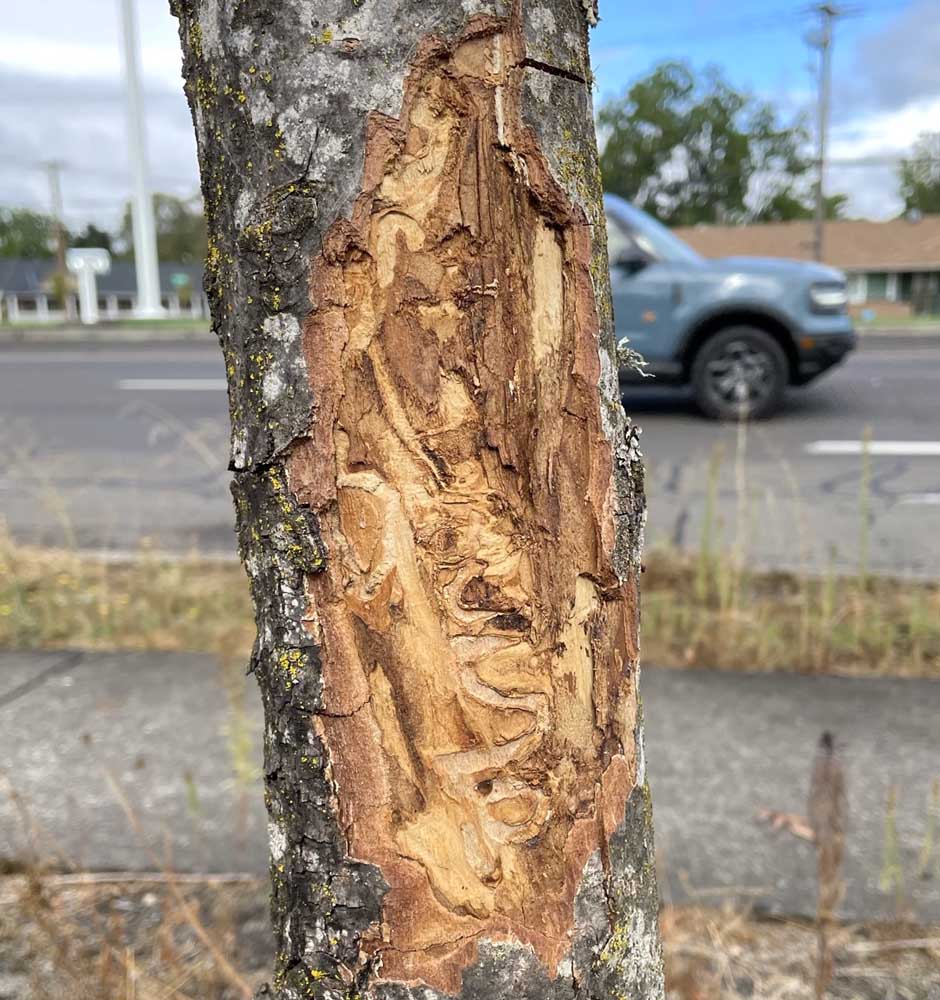Researchers work to thwart emerald ash borer’s impact in Oregon
Published 8:30 am Wednesday, October 16, 2024

- An ash tree in Forest Grove, Ore. shows signs of emerald ash borer damage. The invasive beetle was first discovered in the city in June 2022, prompting a large state-led response to slow its spread. Researchers also hope to identify and breed Oregon ash trees resistant to the pest.
If the emerald ash borer’s spread into Oregon is a slow-moving natural disaster, researchers want to at least blunt the incursion’s full impact.
A team of experts hopes to identify Oregon ash trees with a genetic resistance to the pest, potentially leading to breeding and restoration efforts that could pose an opportunity for the nursery industry.
“Do you want Oregon ash back in, say, 35 years? If yes, then we need to be thinking about that now,” said Richard Sniezko, geneticist at the U.S. Forest Service’s Dorena Genetic Resource Center in Cottage Grove, Ore.
Seeds collected from hundreds of ash trees will be planted out at three test sites in the Willamette Valley next year, allowing researchers to evaluate them for resistance to the emergent pest.
“It’s a little like looking for the needle in the haystack,” said Glenn Howe, director of the Pacific Northwest Tree Improvement Research Cooperative at Oregon State University.
Resistance to emerald ash borers could involve the tree producing chemicals that inhibit the insect’s development or forming a stronger barrier to entry in its bark, among other possible mechanisms.
“The basic principle is we are looking for rare genotypes that aren’t susceptible,” Sniezko said. “Resistance is a numbers game.”
However, researchers from OSU and USFS don’t expect to immediately spot traits that confer total immunity — it’s more likely the initial screening will simply identify trees with potential for further breeding.
“The amount of resistance is probably going to be very low,” said Howe. “We’re not going to find a tree completely resistant to the effects of the insect.”
Identifying trees that can even partially withstand the pest will probably take 10-15 years, with the same amount of time required to test their progeny.
“It’s a very long-term kind of a thing,” Howe said. “We’re trying to jumpstart this as much as possible, because it is a long-term prospect.”
The trials are occurring in areas likely to encounter emerald ash borer in coming years, providing a realistic understanding of the pest’s toll on the trees.
“This is something for the future,” Sniezko said. “We’re not going to turn around and start doing restoration tomorrow.”
Oregon ash seeds were gathered from British Columbia to California beginning in 2019 in anticipation of the emerald ash borer arriving in Oregon, which occurred three years later.
The pest is native to Asia and is already wreaking havoc on ash trees in the Midwest and East Coast, where it was discovered more than two decades ago.
“People are worried about how this will change the landscape,” Sniezko said, referring to potential changes to stream hydrology and vacancies for invasive plant species.
The first year of Oregon ash tree trials is funded with $75,000 from USFS. Researchers want to obtain similar grants for two additional years, and eventually to expand the number of trees tested for resistance.
The exact time frame for developing resistance in Oregon ash and starting restoration efforts, and how those efforts square with the pest’s gradual destruction of vulnerable trees, is uncertain, Howe said.
“Both of those things are going to take quite a while,” he said. “Which is going to move faster than the other? I can’t say.”
Oregon ash serves an important ecological role in the region, shading streams and providing habitat for native birds and insects, so re-establishing the species with resistant trees would rely on help from nurseries.
“If Oregon ash is used for restoration, there will be quite a need for people to grow those trees,” Howe said.
While certain ornamental plants are also susceptible to the emerald ash borer, re-establishing Oregon ash will likely depend on nurseries geared toward reforestation and environmental projects.
“The relevance is a lot more to the seedling greenhouse than the landscape nursery business,” he said.






